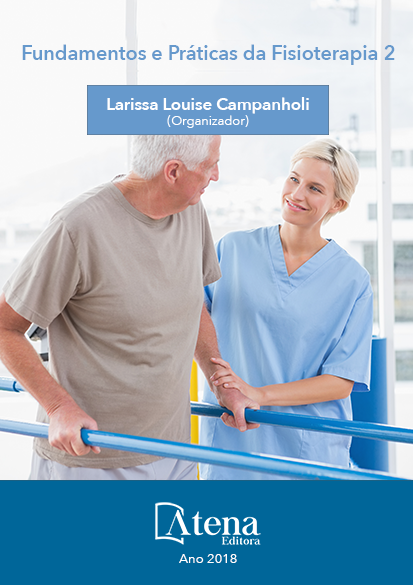
Análise ergonômica do trabalho em uma atividade de uma empresa do ramo alimentício
Nenhum ambiente de trabalho é
bom o bastante que não precise de mudanças,
pois o ser humano é único e seu conforto é
algo subjetivo, devendo passar por processo
de melhoria contínua. Pensando nisso
objetivou-se realizar uma análise do trabalho
de uma funcionária que atua em uma fábrica
de produtos alimentícios, visando a reflexão
sobre a aplicação da ergonomia como auxílio
a identificar riscos à saúde do trabalhador.
Realizou-se observação geral da empresa,
seguindo para análise do setor, posto de trabalho
e da funcionária. A análise foi feita através de
registros fotográficos e vídeos, decomposição e
registro da tarefa diário, aplicação da equação
de NIOSH, observação e registro de fatores
ambientais e entrevista contendo NASA TLX
adaptado e a Escala Visual Analógica (EVA)
de desconforto. Finalizou-se apontado riscos
relacionados à tarefa realizada e as medidas
profiláticas. Na EVA obteve-se dor de moderada
a intensa em tornozelos e panturrilhas, lombar
e parte distal dos dedos, ombro e trapézio,
pescoço e antepé esquerdo. O método NASA
TLX resultou em carga de trabalho total de
13,65 pontos, quase a máxima (15), observando
que o fator mais impactante para a funcionária
é o esforço. A equação de NIOSH indicou
risco elevado. A luminosidade é razoável, a
temperatura no inverno é agradável e no verão
desconfortável. No ruído há necessidade do
uso de protetor auricular. Demonstrou-se
problemas relacionados ao posto de trabalho
da funcionária e seu trabalho, podendo agravar
sua saúde, necessitando de alterações neste
ambiente melhorando as condições de trabalho.
Análise ergonômica do trabalho em uma atividade de uma empresa do ramo alimentício
-
DOI: Atena
-
Palavras-chave: Fisioterapia preventiva, ergonomia, empresas, saúde
-
Keywords: No working environment is good enough that does not need changes, because the human being is unique and his confort is something subjective, and must undergo a continuous improvement process. Thinking about that, the purpose of this study was to analyze the work of an employee who works in a food factory, aiming for the reflection on the application of ergonomics as an aid to identify Fundamentos e Práticas da Fisioterapia 2 Capítulo 2 16 risks to the work’s health. A general observation of the company was made, followed for analysis of the sector, workstation and employee. The analysis was done through photographic records and videos, decomposition and daily task record, application of the NIOSH equation, observation and recording of environmental factors and interview containing NASA TLX adapted and Visual Analogue Scale (EVA) of discomfort. It was concluded pointing out risks related to the task performed and the prophylactic measures. In the EVA there was moderate to severe pain in the ankles and calves, lumbar and distal part of the fingers, shoulder and trapezius, neck and left forefoot. The NASA TLX method resulted in a total workload of 13,65 points, almost the maximum (15), observing that the the most impactful factor for the employee is the effort. The NIOSH equation indicate high risk. The brightness is reasonable, the temperature in the winter is pleasant and in the summer is uncomfortable. In noise there is a need for ear protection. It has been shown problems related to employee’s workstation and her work, may aggravate her health, necessitating changes in this environment and improving working conditions.
-
Abstract:
No working environment is good
enough that does not need changes, because
the human being is unique and his confort is
something subjective, and must undergo a
continuous improvement process. Thinking
about that, the purpose of this study was to
analyze the work of an employee who works in
a food factory, aiming for the reflection on the
application of ergonomics as an aid to identify
risks to the work’s health. A general observation of the company was made, followed
for analysis of the sector, workstation and employee. The analysis was done through
photographic records and videos, decomposition and daily task record, application of
the NIOSH equation, observation and recording of environmental factors and interview
containing NASA TLX adapted and Visual Analogue Scale (EVA) of discomfort. It
was concluded pointing out risks related to the task performed and the prophylactic
measures. In the EVA there was moderate to severe pain in the ankles and calves,
lumbar and distal part of the fingers, shoulder and trapezius, neck and left forefoot. The
NASA TLX method resulted in a total workload of 13,65 points, almost the maximum
(15), observing that the the most impactful factor for the employee is the effort. The
NIOSH equation indicate high risk. The brightness is reasonable, the temperature in
the winter is pleasant and in the summer is uncomfortable. In noise there is a need
for ear protection. It has been shown problems related to employee’s workstation and
her work, may aggravate her health, necessitating changes in this environment and
improving working conditions.
-
Número de páginas: 15
- Rafaela Silveira Maciazeki
- Bruna König dos Santos
- Tatiana Cecagno Galvan


